You want more traffic, more leads, and more customers.
But you’re stuck.
You’ve tried all the on-page SEO tricks, but you’re still not seeing the results you want.
It’s time to do off-Page SEO.
In this guide, we will go over the basics of Off-Page SEO and how you can start optimizing your website today.
Let’s dive in!
Disclosure: Our website is reader-supported. If you purchase any product through our partner links, we may earn a commission at no extra cost to you.
What is Off-Page SEO?
Off-page SEO is the practice of optimizing a website for Google search with techniques that are not directly on the website. It refers to all the activities that are done outside of your website to improve your ranking on the search engine results pages (SERPs).
This includes things like link building, social media marketing, brand mentions, and more.
On-Page vs. Off-Page SEO vs. Technical SEO
When it comes to search engine optimization (SEO), there are three main types: on-page, off-page, and technical.
But what exactly are these types of SEO, and how do they differ from one another? Let’s take a closer look.
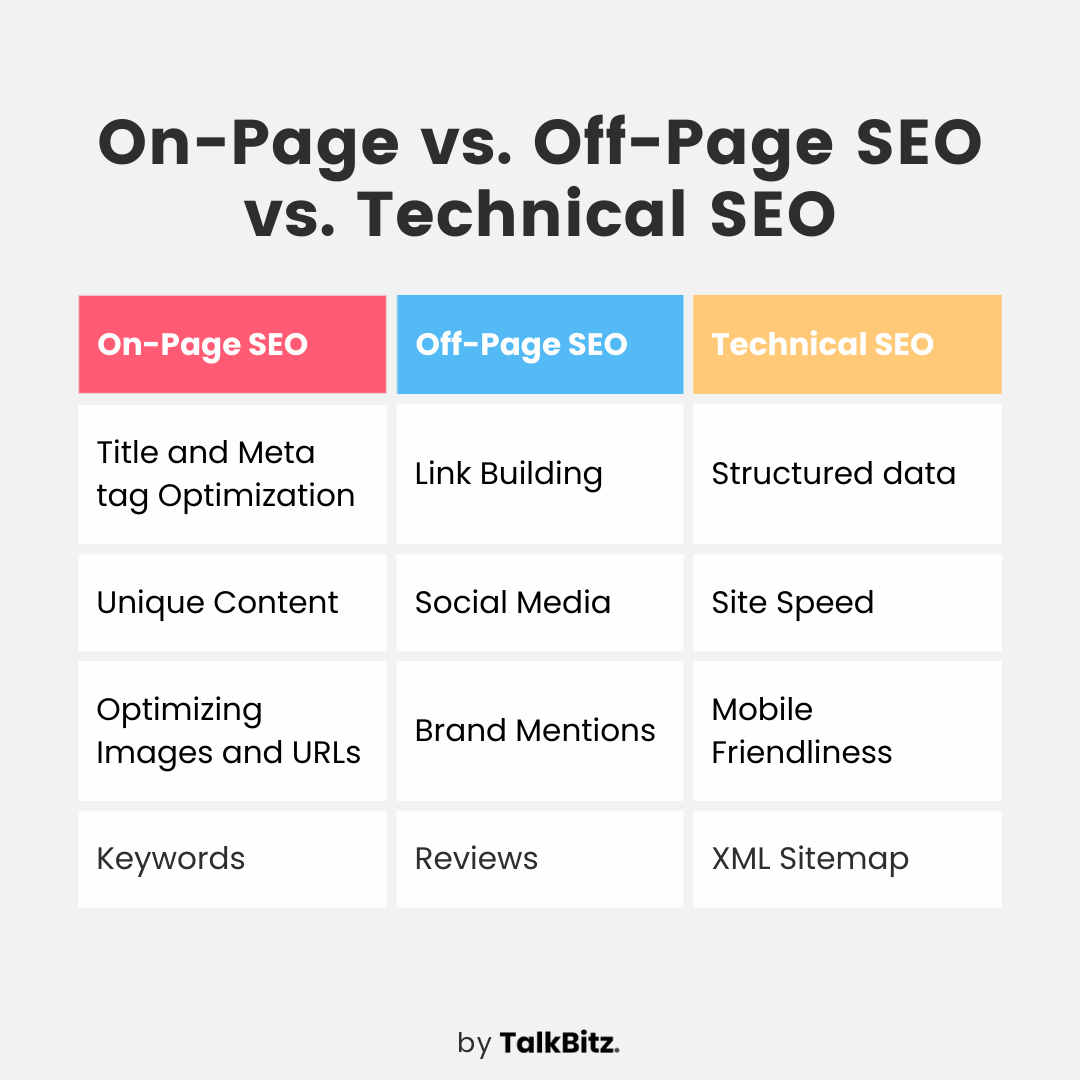
- On-page SEO is all about optimizing the content on your website for search engines. This includes things like using the right keywords and phrases, as well as making sure your website is easy to navigate.
- Off-page SEO is about promoting your website through other channels. This can include things like link building and social media marketing.
- Technical SEO is all about making sure the technical aspects of your website are up to par. This includes things like site speed and mobile friendliness.
All three types of SEO are important for any business that wants to rank higher in search engines.
Why is Off-Page SEO Important?
Off-page SEO is important because it helps Google understand what your website is about and how it should rank in search results. It shows Google that your site is being talked about and referenced by other people on the internet.
It’s important because it signals to Google that your site is a high-quality resource worthy of ranking.
However, off-page optimization is not a one-time event. It’s an ongoing process that should be incorporated into your overall marketing strategy.
5 Off-Page SEO Techniques for Better Rankings
When it comes to SEO, most people focus on on-page techniques. However, off-page SEO is just as important for better rankings.
Here are 5 off-page SEO techniques that can help you achieve better rankings.
1. Link Building
Link building is the process of acquiring new links (Backlinks) to a website with the goal of improving search engine visibility and organic traffic levels. The more high-quality backlinks a website has, the higher it will rank in the SERPs.
That’s because Google sees links as “votes” for a website.
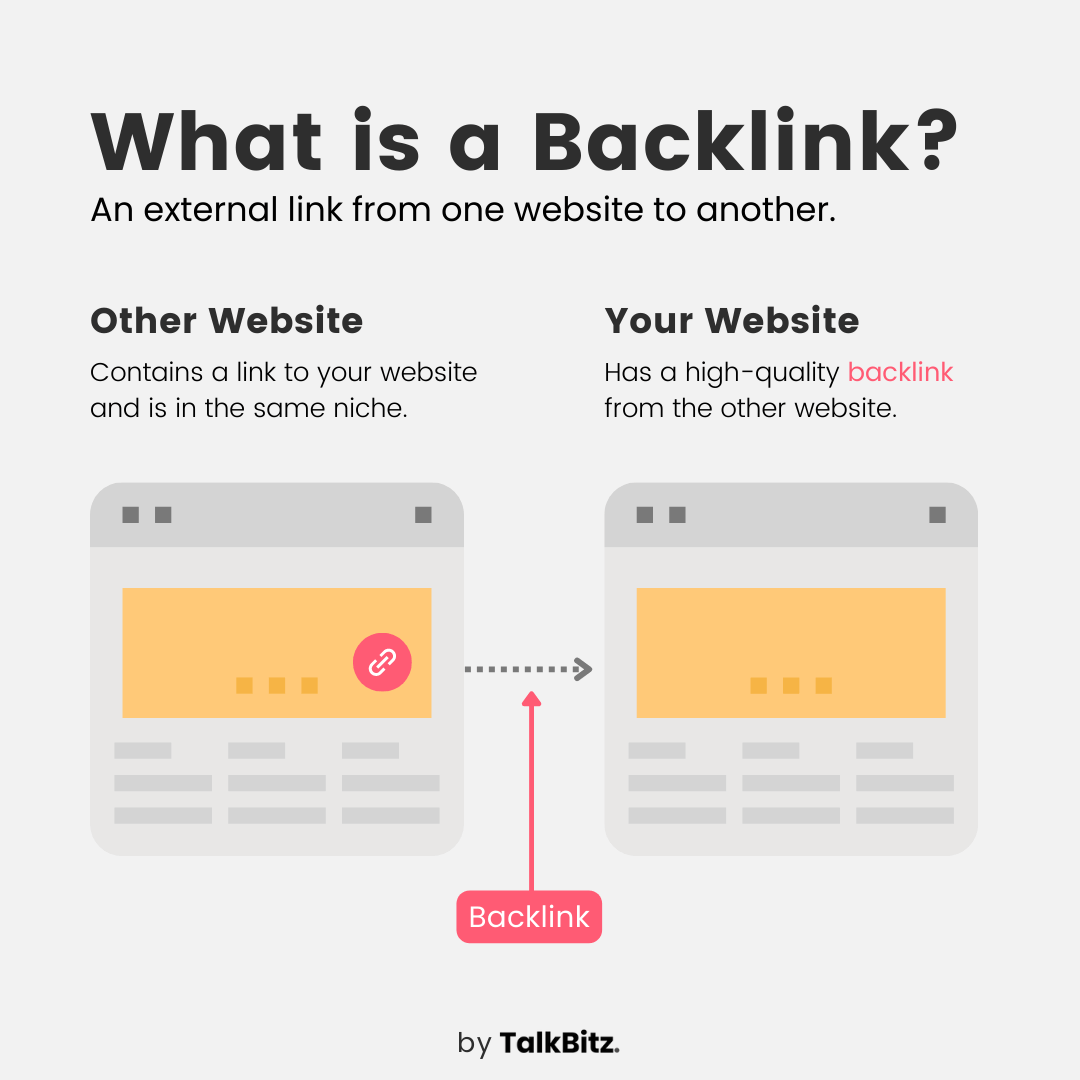
The logic goes like this: if Website A links to Website B, then Website A must think that Website B is pretty good.
Therefore, Google will also think that Website B is pretty good and will rank it accordingly.
If you’re serious about improving your SEO, then you need to start building backlinks, simply take this Free Link Building Course at Semrush.
With your effort and patience, you can start seeing some great results.
2. Guest Blogging
Guest blogging is a great way to build relationships and grow your off-page SEO. By contributing content to another blog, you can reach a new audience and get your name out there.
Guest blogging can also be a great way to build backlinks to your own site.
If you’re thinking of guest blogging, there are a few things you should keep in mind.
First, make sure you’re writing for a high-quality site that is relevant to your niche. Second, take the time to write a well-crafted article that will offer value to the reader.
Finally, be sure to promote your guest post on your own social media channels to help drive traffic back to the host site.
But how do you find websites that accept guest posts?
Brian Dean from Backlinko has explained 7 Techniques to come up with a list of target websites.
Once you have your list, reach out to the website owners and pitch them your idea for a guest post.
Still don’t have your own blog? Read: How to start a blog
3. Brand Mentions
There are a number of ways to track brand mentions online. Google Alerts is a free service that allows you to monitor the web for specific keywords, including your brand name.
Marketing tools like Semrush can also help you track brand mentions easily.
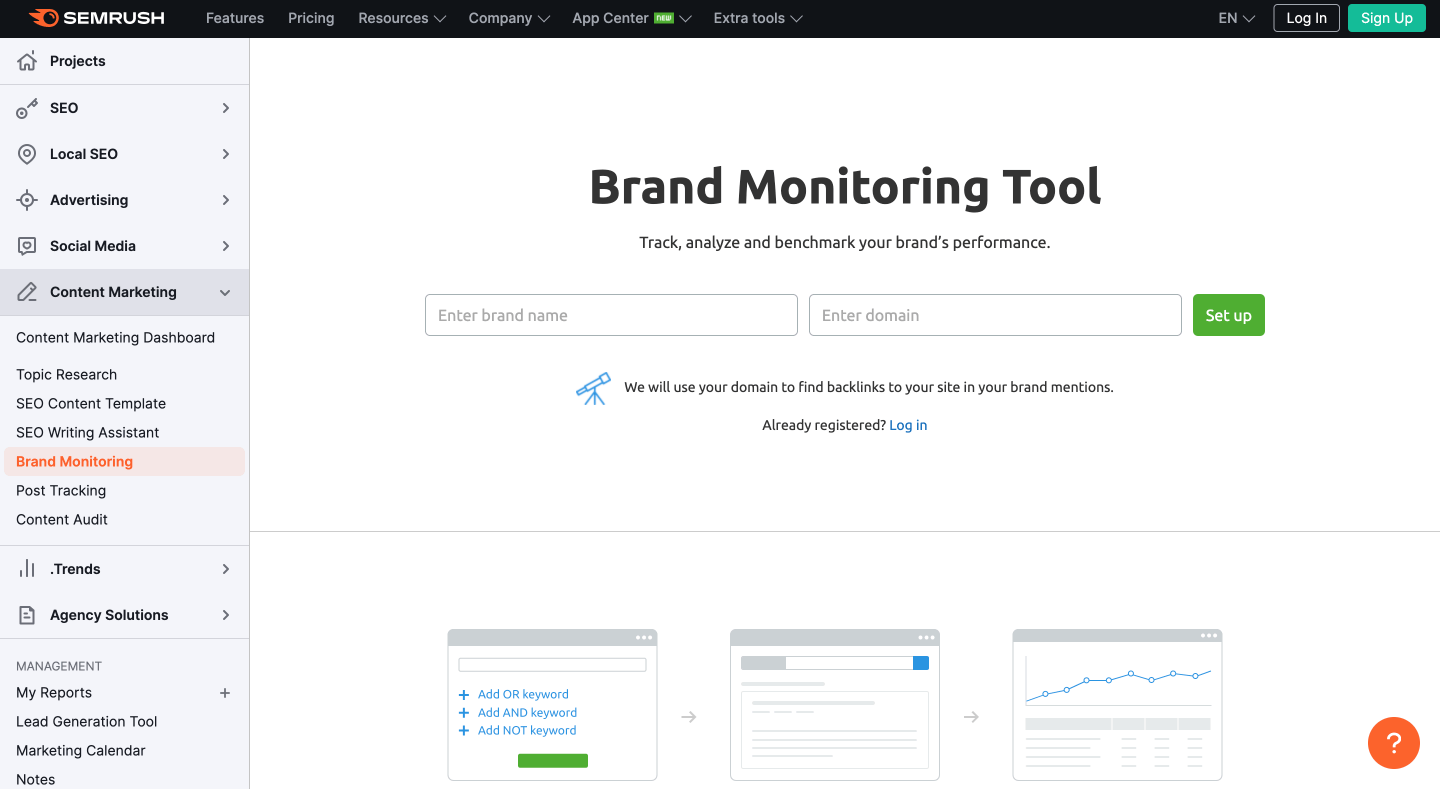
Once you’ve identified where your brand is being mentioned online, you can convert unlinked brand mentions into backlinks.
But how?
The first step is to reach out to the site owner or webmaster and let them know that you noticed they mentioned your brand on their site.
Be sure to thank them for the mention and politely ask if they would be willing to link back to your site.
When reaching out, be sure to provide value.
Explain how it will add value to their content. Make it easy for them to say yes by providing all the information they need upfront.
4. Social Media Marketing
Social media has become an important part of our lives and the way we communicate with each other. It’s also become a powerful tool for businesses to promote their products and services.
But Google has said from time to time that they do not use social signals as a ranking factor.
So why bother with this?
The answer is simple: When you share something on social media, it has the potential to be seen by thousands, even millions of people.
Ultimately, more users will see your content, which will attract more visitors and increase the chances of more shares, backlinks, and clicks.
Luckily, there are tools available to help you more consistently engage with your audience.
One of our favorites is Canva.
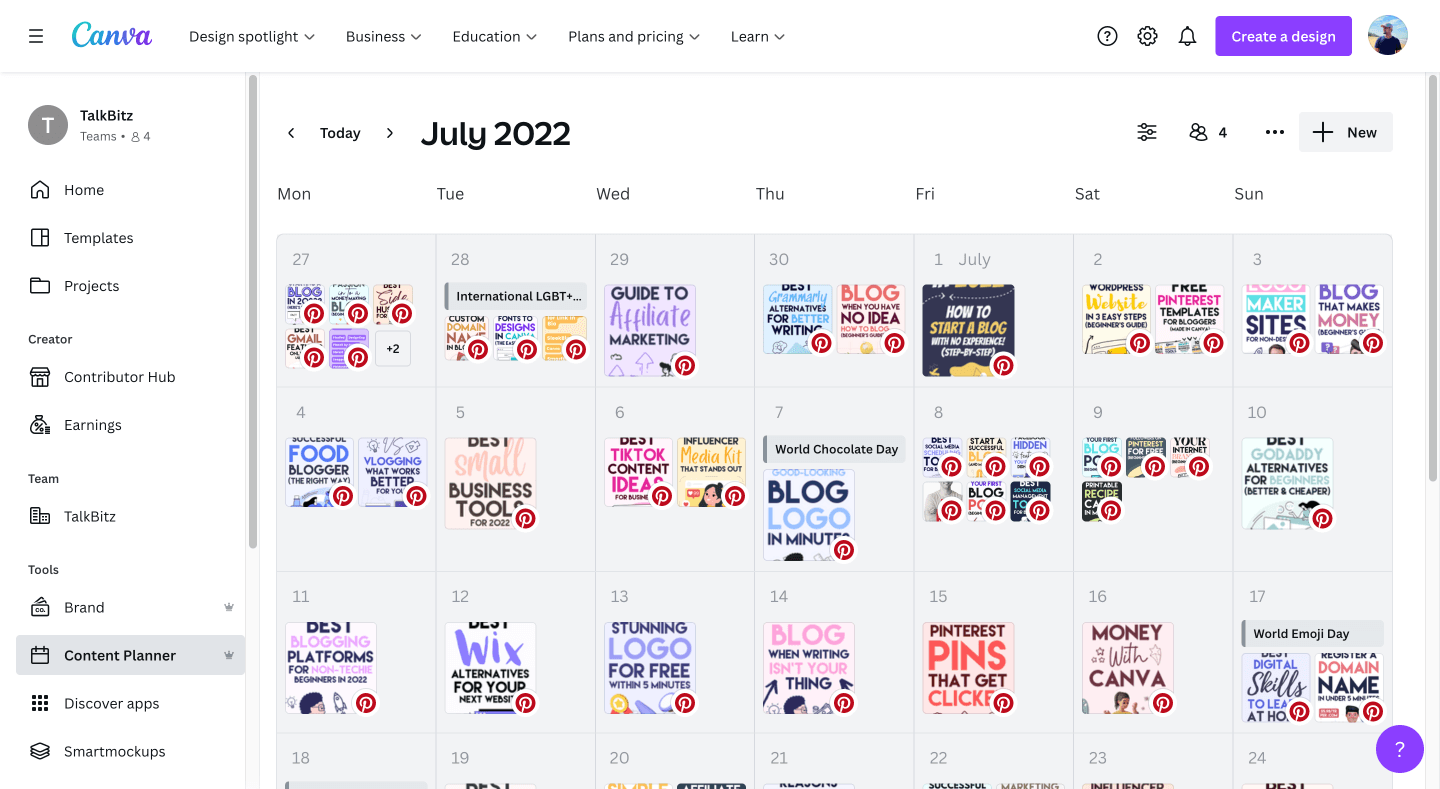
With Canva, you can create custom images for your social media posts, including Facebook and Twitter cover photos, blog post images, infographics, and more.
What’s even better is that Canva offers a built-in social media scheduling tool so you can schedule your posts ahead of time and free up some much-needed time in your busy schedule.
5. Local SEO
Local SEO is one type of off-page SEO strategy that is particularly important for businesses that have brick-and-mortar locations such as grocery stores, salons, pet stores or gyms, etc.
Local SEO refers to the process of optimizing your website for local search results.
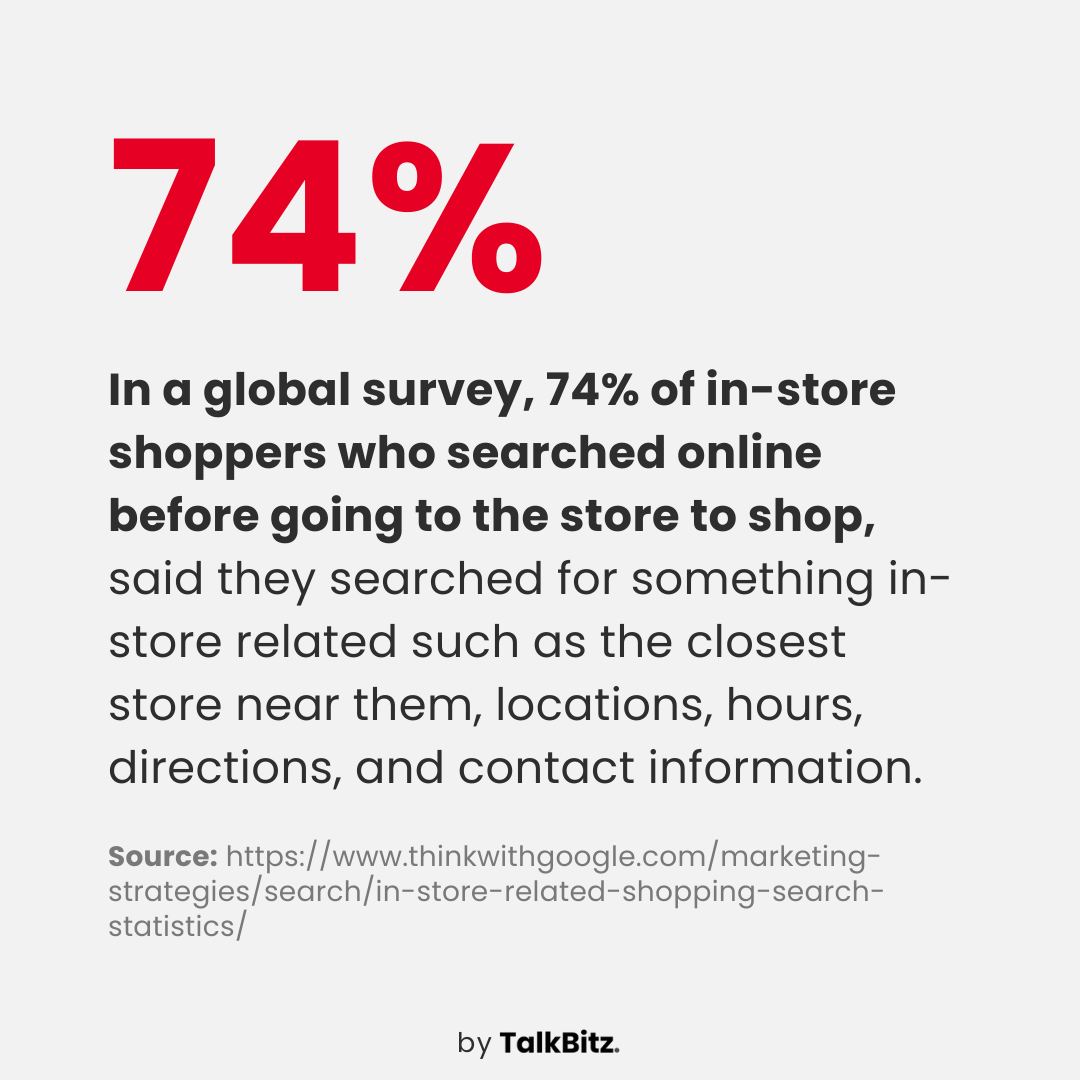
There are a number of reasons why local SEO should be a key focus for businesses, especially if they are looking to generate online leads.
It is an extremely effective way to reach potential customers who are searching for products or services in your area.
And, local SEO can help you to build trust and credibility with potential customers.
When they see that you are appearing in search results for their local area, they will be more likely to trust your brand and consider using your products or services.
And most importantly, search engines rely on signals such as local content to provide the most relevant local results to their users.
Here are a few tips to get started with Local SEO:
- Make sure your website is listed on Google My Business. This is a free listing that allows you to control how your business appears in Google Maps and organic search results.
- Use keyword-rich titles and descriptions on your website content. This will help ensure that your site comes up in relevant searches.
- Add your address and contact information to your website. This makes it easy for potential customers to find you, and also helps with local SEO.
- Claim your listings on review sites like Trip Advisor, and Yelp. These can help boost your visibility in search results.
- Promote deals and discounts on local directories and social media. This will help you attract new customers and get them in the door.
To learn more about local SEO, check out this article on the HubSpot blog.
Final Thoughts
Now you know that Off-page SEO is the process of optimizing a website for better search engine rankings through activities outside of the site itself.
This might seem harder than on-page SEO because many off-page factors aren’t entirely under your control.
However, by understanding how these factors work and how to influence them, you can still make significant improvements to your site’s ranking.
Happy off-page SEO!
